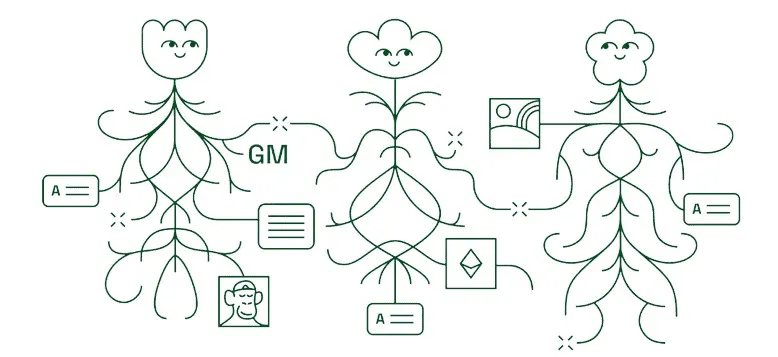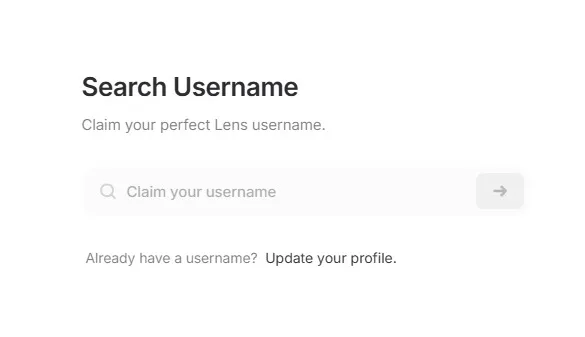
WEB3 in simple words
WEB3 is a new concept of Internet development based on decentralized technologies such as blockchain, smart contracts and cryptography. Unlike the previous two versions of the web, WEB3 focuses on full transparency, increased security and user control over data.
Web1, Web2, Web3: how has the Internet changed?
The development of the Internet can be divided into three key stages:
-
Web1 (1990s - early 2000s) - the “readable Internet”. It consisted of static pages where users could only view information.
-
Web2 (mid-2000s - present) - “interactive Internet”. Social networks, content platforms (YouTube, Facebook), centralized services and big companies owning user data emerged.
-
Web3 (present and future) - “decentralized internet”. Blockchain, cryptocurrencies, tokens, and smart contracts are being used for the first time to allow users to maintain control over their data and financial assets.
Web3 technologies
The device of this version of the web has available technologies that have not been previously utilized in any of the previous versions.
Blockchain and decentralization
The idea of Web3 is built on the principles of decentralization, eliminating intermediaries. Blockchain is a distributed database where information is recorded in immutable blocks, which increases security and transparency.
Smart contracts and DeFi
Smart contracts are programs running on the blockchain that automatically execute agreements. They are the foundation of Web3 technologies used in decentralized finance (DeFi), an ecosystem that replaces traditional banks and exchanges.
DAOs are decentralized autonomous organizations
DAOs are communities that operate without centralized management, where decisions are made based on the vote of token holders. This is a new format for managing companies and projects in Web3.
Examples of working Web3 projects
A lot of projects have already entered the main network, more projects are just about to enter. The main focus of the projects is social networking and user interaction on the web.
Lens Protocol - decentralized social networks

Lens Protocol is a decentralized social network for crypto users built on the Polygon blockchain. It is developed by the Aave team and is a platform that allows its users to generate, own and monetize their digital content without being tied to centralized platforms like Facebook, Telegram, Twitter or Instagram.
Lens Protocol is designed to create next-generation social networks where users have full control over their data, subscriptions and content, and developers can easily develop new social applications based on the existing social graph.
The core principles of Lens Protocol are
-
Decentralization - all information about users and their interactions is stored on the Polygon blockchain, not on one company’s servers.
-
Content ownership - each user has full control over their data, subscriptions, and publications.
-
Interoperability - applications and services built on Lens can interact with each other using a single social graph.
-
Monetization - content creators can earn through subscriptions, donations, NFT and other mechanisms.
Principle of Lens Protocol:

Profiles
Each user creates a unique Lens Profile, which is stored on the blockchain as an NFT. This profile includes all information about the user, their subscriptions and content.
Subscriptions
When a user subscribes to someone’s profile, an NFT subscription is created that gives them access to exclusive content or other privileges. This allows authors to monetize their audience.
Publishing
In Lens, you can publish content in a variety of ways:
-
Posts - regular publications that are visible to everyone or a limited audience.
-
Comments - allow you to interact with other people’s posts.
-
Reposts (Mirrors) - similar to retweets, but with the possibility of monetization.
Collecting content
Users can buy or collect posts they like in the form of NFTs. This allows you to support authors and own digital content.
Modularity
Lens supports modules that allow customization of subscriptions, publishing, and fundraising. For example, an author can customize subscriptions so that only owners of certain NFTs get access to their content.
Why Lens Protocol is important:
-
Users gain control - they are free to move their subscriptions, content, and audience between different platforms.
-
Content cannot be deleted - as it is recorded on the blockchain.
-
Monetization without intermediaries - authors can earn directly from their audience.
-
Censorship is more difficult - there is no centralized authority to block an account.
How to get started using Lens Protocol:

-
Get Lens Profile - purchase with MATIC cryptocurrency on the site…
-
Choose an app - like Lenster for socializing or Lenstube for videos.
-
Start publishing content - create posts, subscribe to others, and interact with the community.
Criticism and regulation of Web3
Despite the potential, Web3 faces criticism. The main concerns are:
Criticisms of Web3:
1. Centralization in decentralization
One of the main contradictions of Web3 is that its decentralization is often only nominal. Much of the infrastructure, including blockchains, crypto exchanges, and wallets, is controlled by a small number of companies.
2. High barriers to users
Web3 is complex for the mass user. To participate in the ecosystem, you need to understand how blockchains, cryptocurrencies and tokens work, and be able to store your private keys securely. Losing a seed phrase means a complete loss of access to assets, and mistakes in digital financial management can lead to significant financial losses.
3. Security issues
Smart contracts are prone to vulnerabilities that hackers use to steal millions of dollars. DeFi protocols and NFT marketplaces are hacked regularly, undermining user confidence.
4- Energy consumption and the environment
Although many new blockchains are moving to more energy-efficient mechanisms such as Proof-of-Stake, classic Proof-of-Work-based networks (e.g., Bitcoin) continue to consume huge amounts of electricity.
5. Lack of a clear economic model
Many Web3 projects base their economics on token speculation and NFT. Most projects launch tokens with no real utility, and their value depends on hype rather than fundamental value.
6. Lack of user protection
In traditional financial systems, banks and government institutions provide guarantees and deposit protection, but Web3 lacks such mechanisms.
Web3 regulation:
1. Control of cryptocurrencies and DeFi
States and regulators around the world are seeking to impose controls on Web3, especially in the area of cryptocurrencies and DeFi. One of the main areas of focus is mandatory user authentication (KYC/AML), which is already in place on most centralized exchanges. In addition, governments are introducing taxation of cryptocurrency transactions, making it more difficult to use it as an anonymous financial instrument.
2. Consumer protection
User protection plays an important role in regulation. Many countries are developing laws to prevent ICO and NFT fraud. Some nations, such as China, have completely banned cryptocurrency trading and NFTs for fear of instability and financial risks.
3. Regulation of NFTs and digital assets
NFTs and digital assets raise complex issues in terms of legislation. Different countries treat them as securities, digital property or collectibles.
4. Decentralization vs. laws
Decentralized Autonomous Organizations (DAOs) are also becoming a target of regulators. Since DAOs do not have a legal entity, it is difficult to bring them under existing laws.
Conclusion
Web3 is the new stage of the internet, offering users more freedom and control over their data and finances. Despite many technical difficulties in adoption and regulatory issues, the idea of Web3 continues to evolve, creating new opportunities in the crypto market for users around the world.
FAQ
1. What is Web 3?
Web3 is a decentralized version of the internet where blockchain and tokens are available.
2. WEB3 wallet - what is it?
Web3 wallet is a tool for storing and managing digital assets, interacting with Web3 projects and signing smart contracts.
3. Web3 what does it include?
Web3 includes blockchain, decentralization, smart contracts, Web3 coins and Web3 technology.
4. How to earn in Web3?
You can earn in Web3 through participating in Web3 projects, steaking cryptocurrencies, NFT trading and working with decentralized finance (DeFi).
5. What are the risks associated with Web3?
Risks of Web3 include high token volatility, the possibility of fraud, and regulatory and identity security complexities.